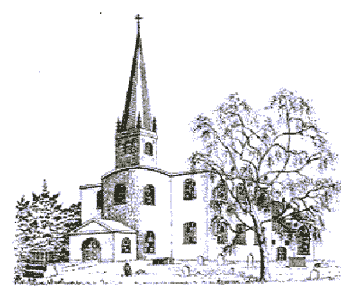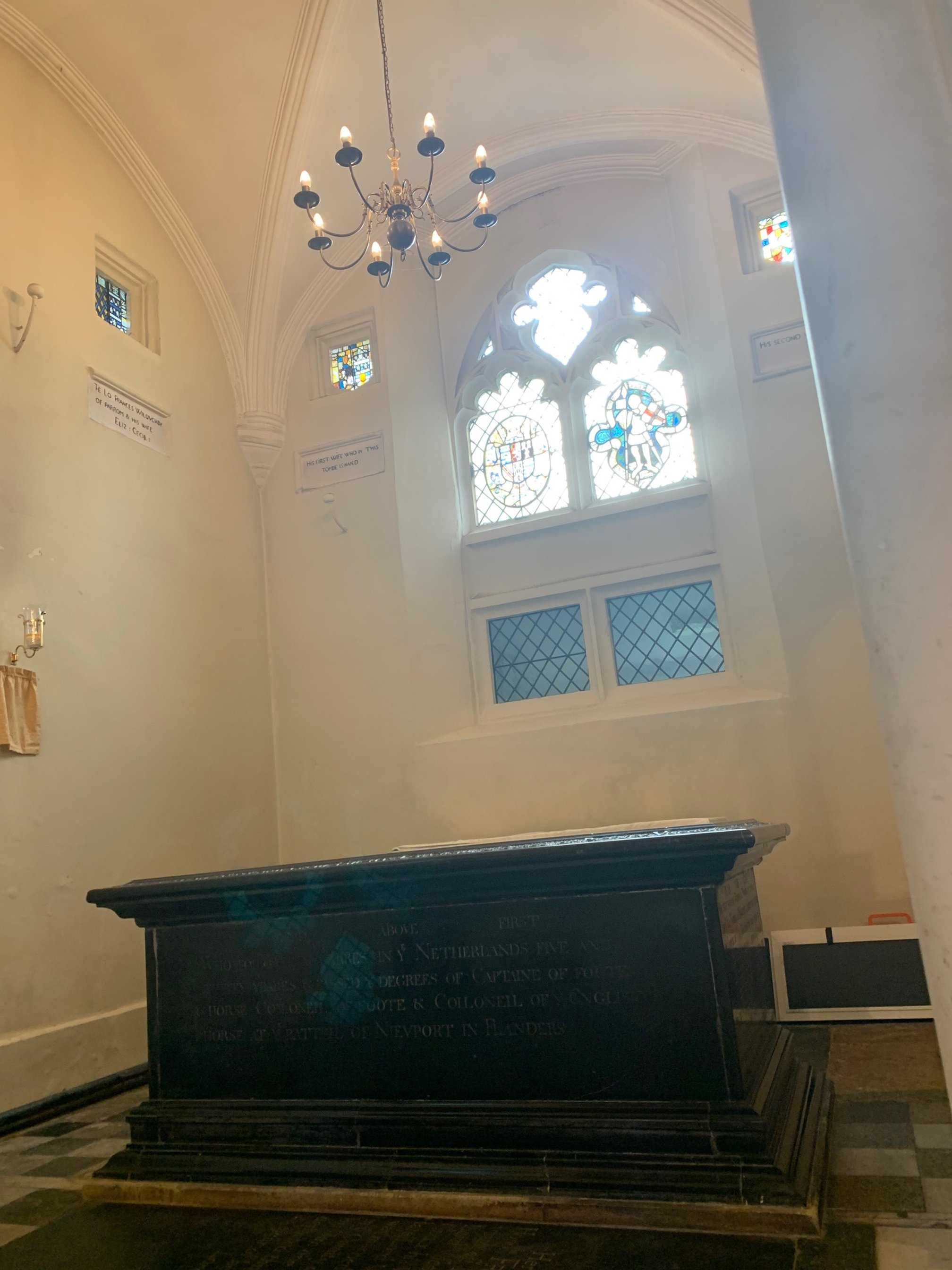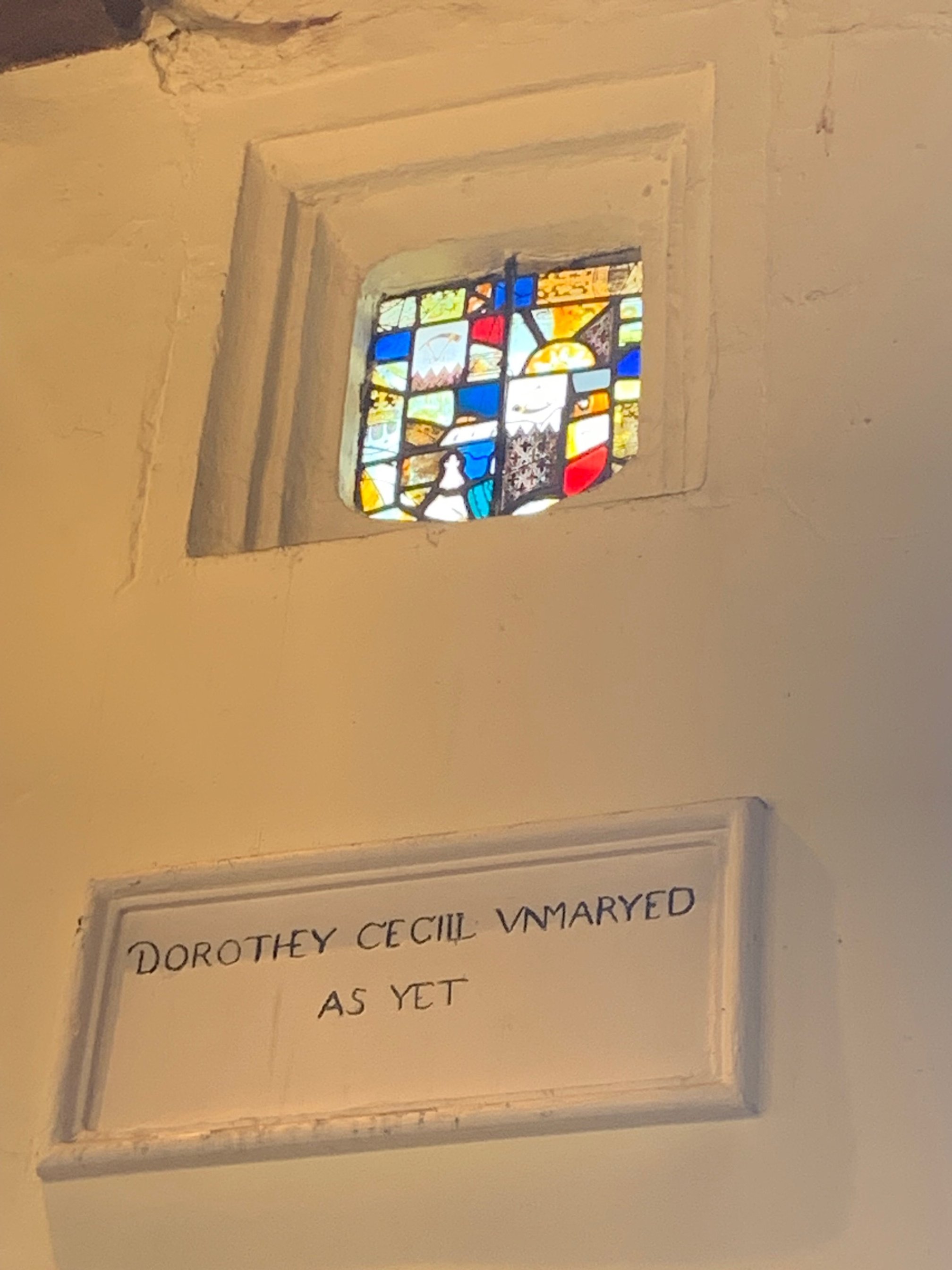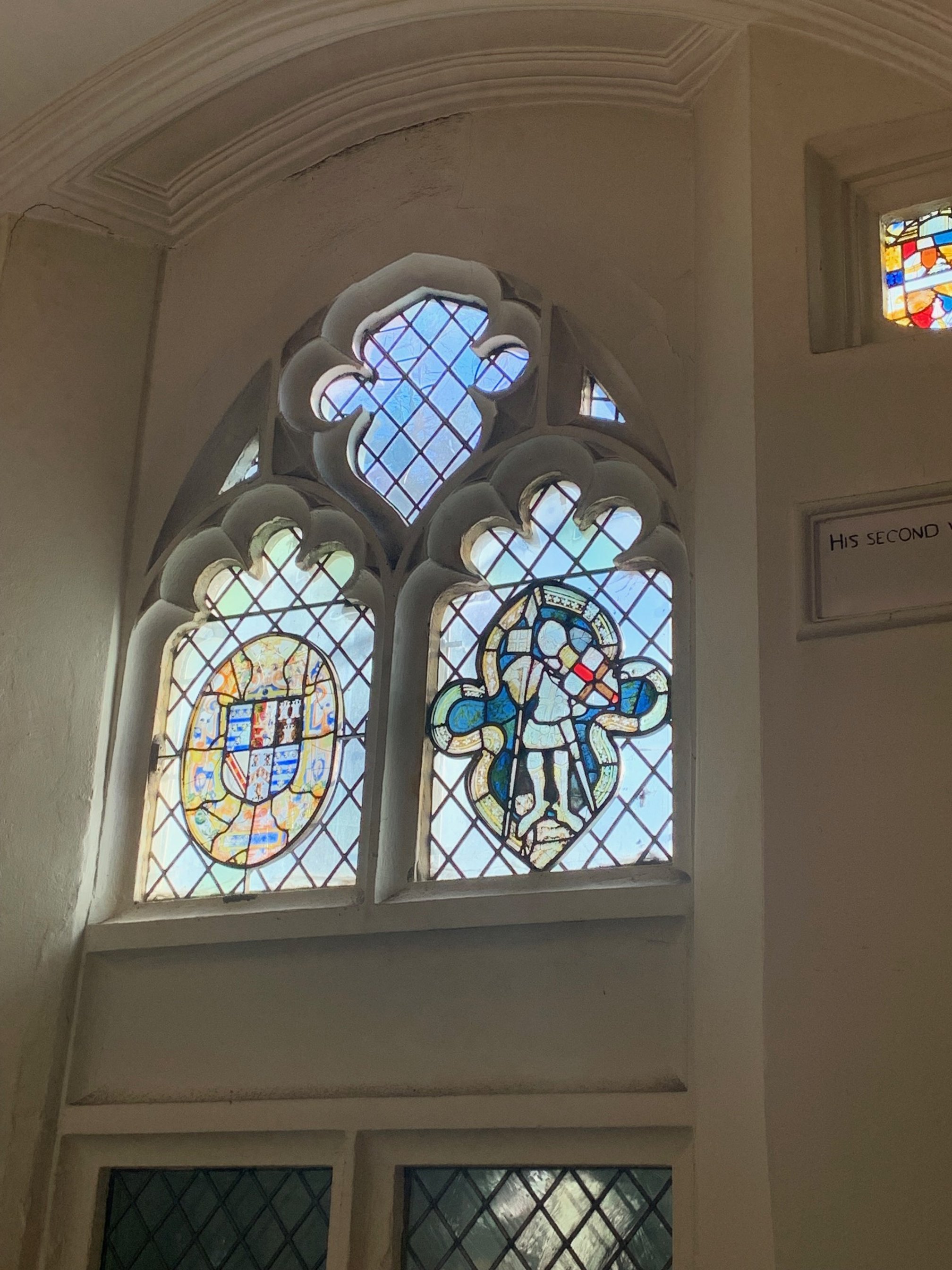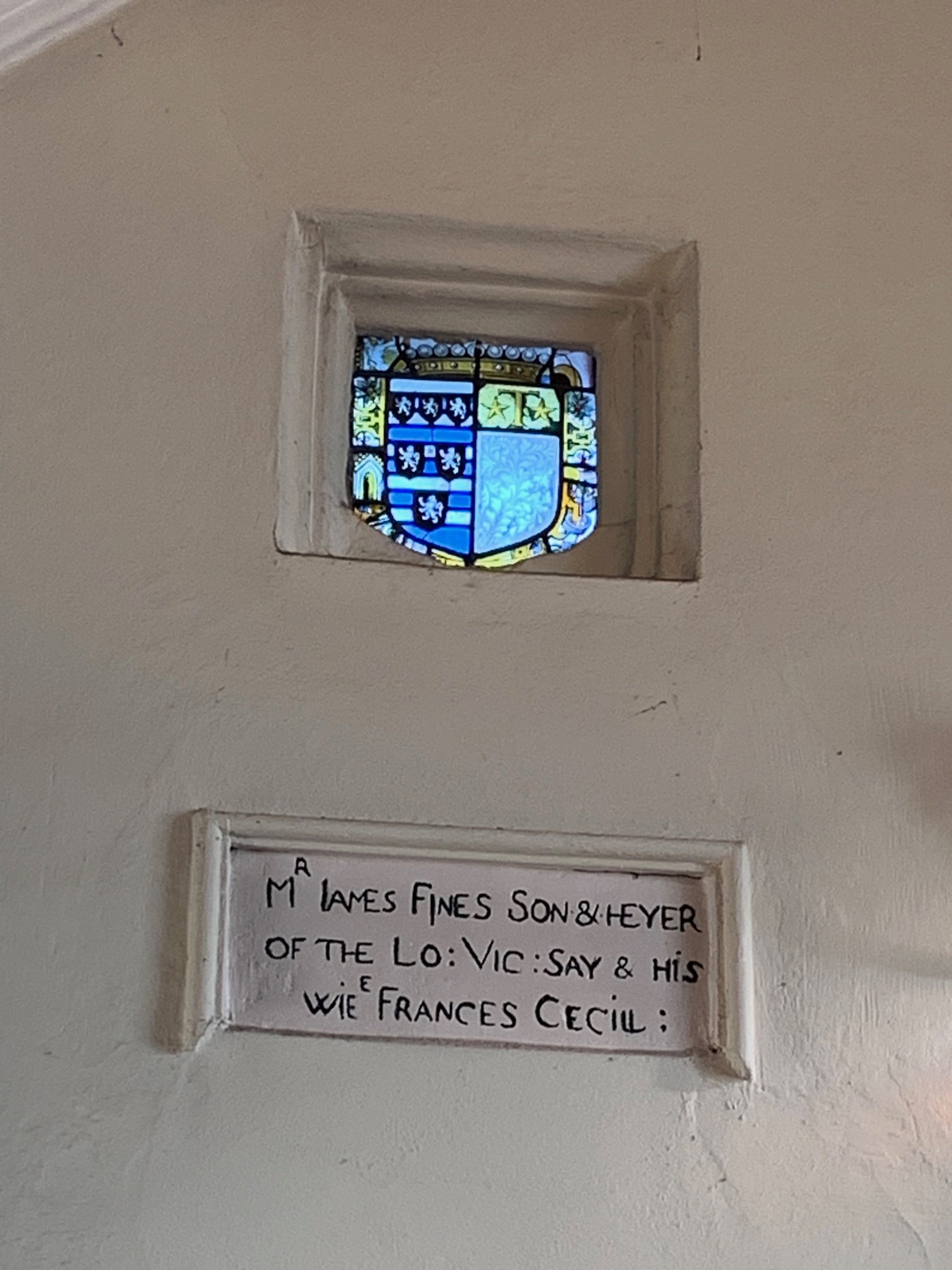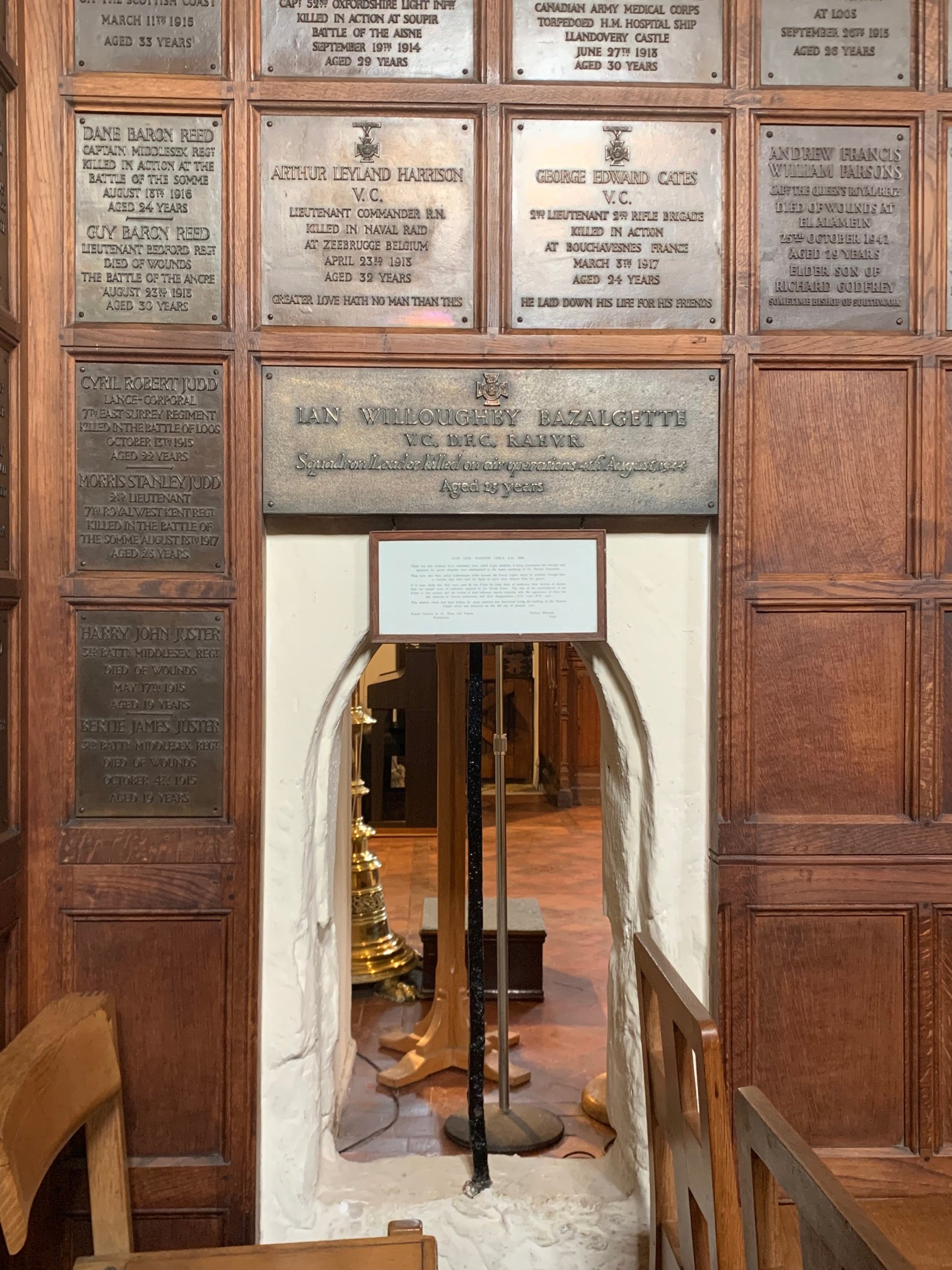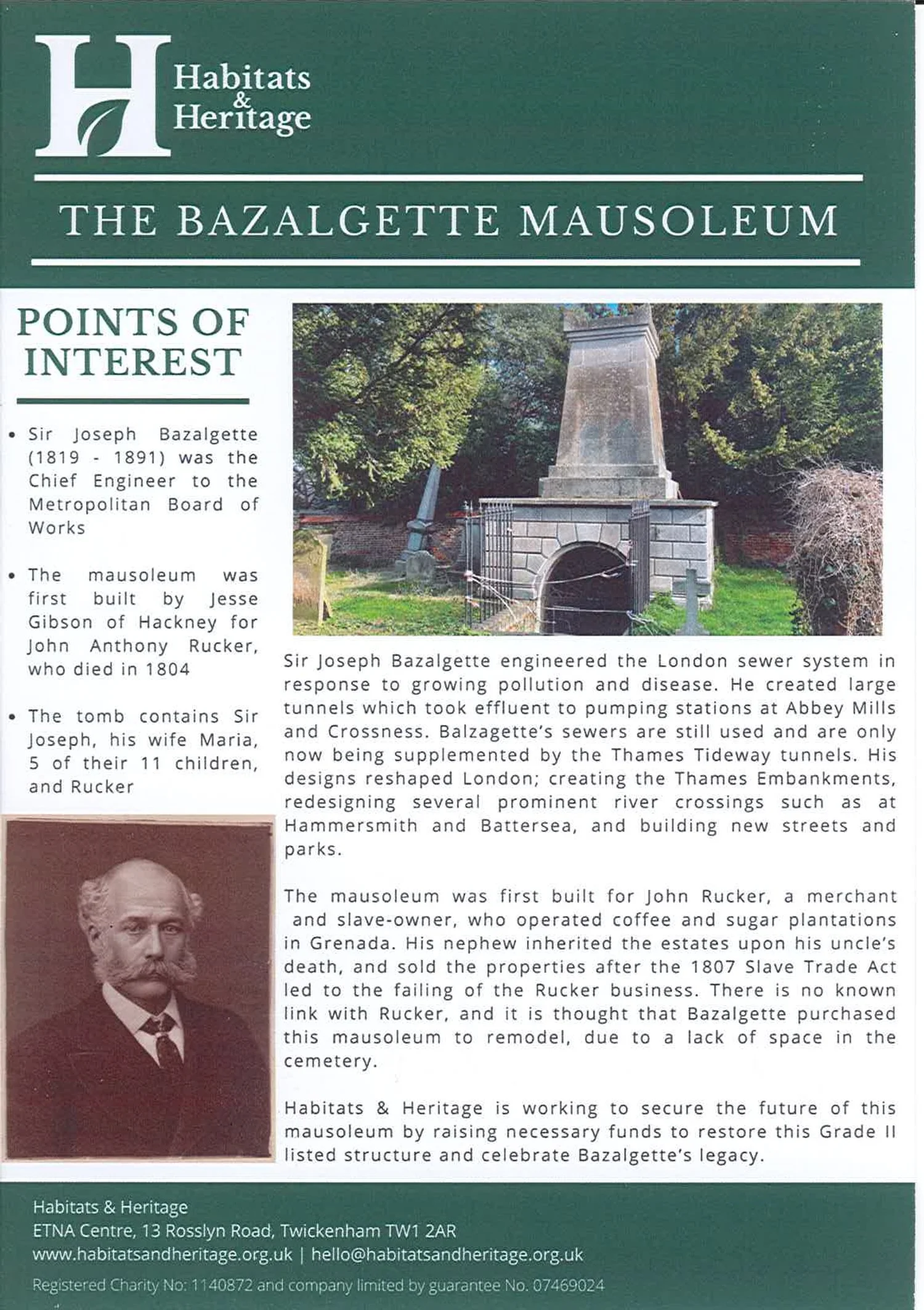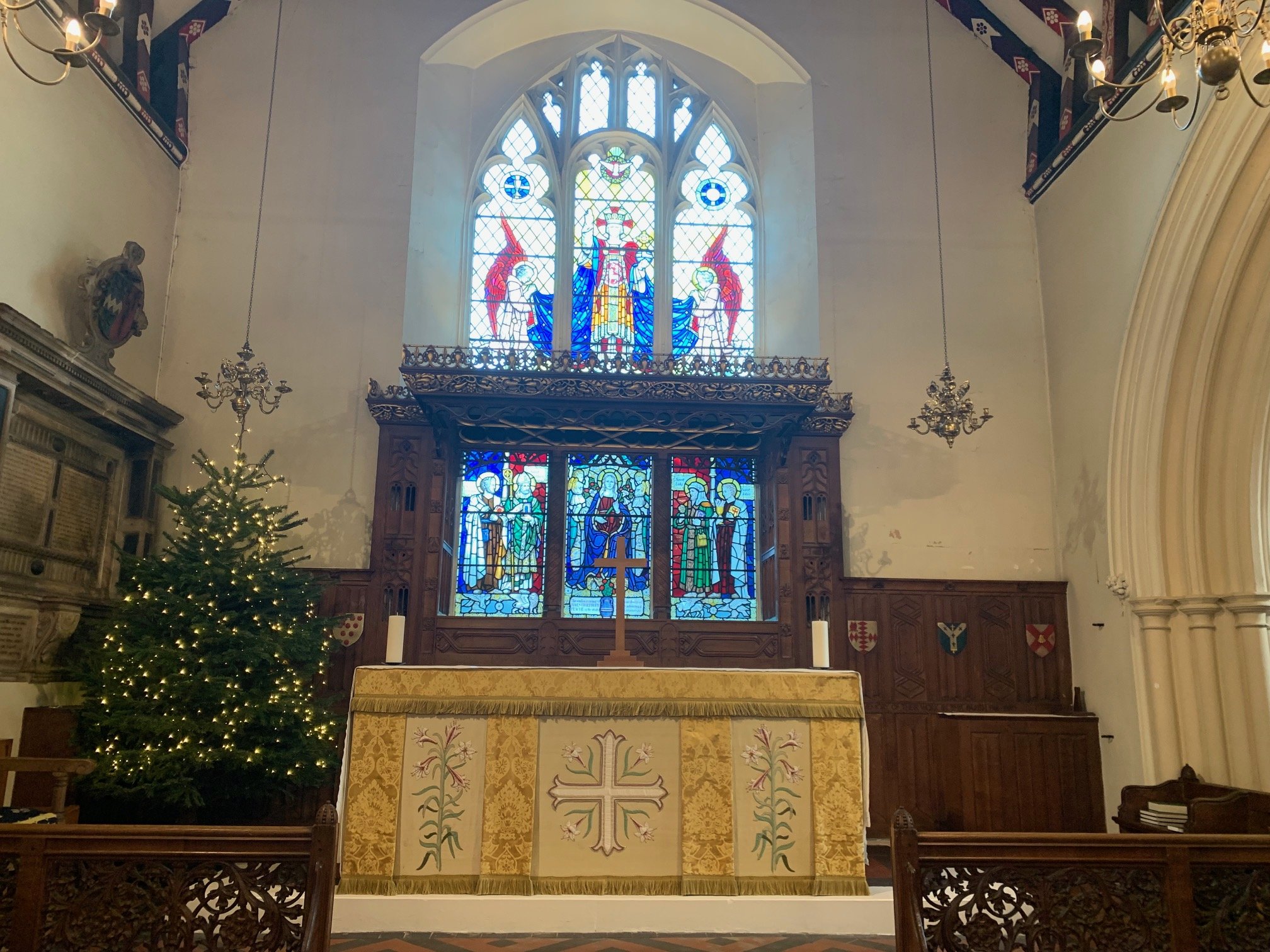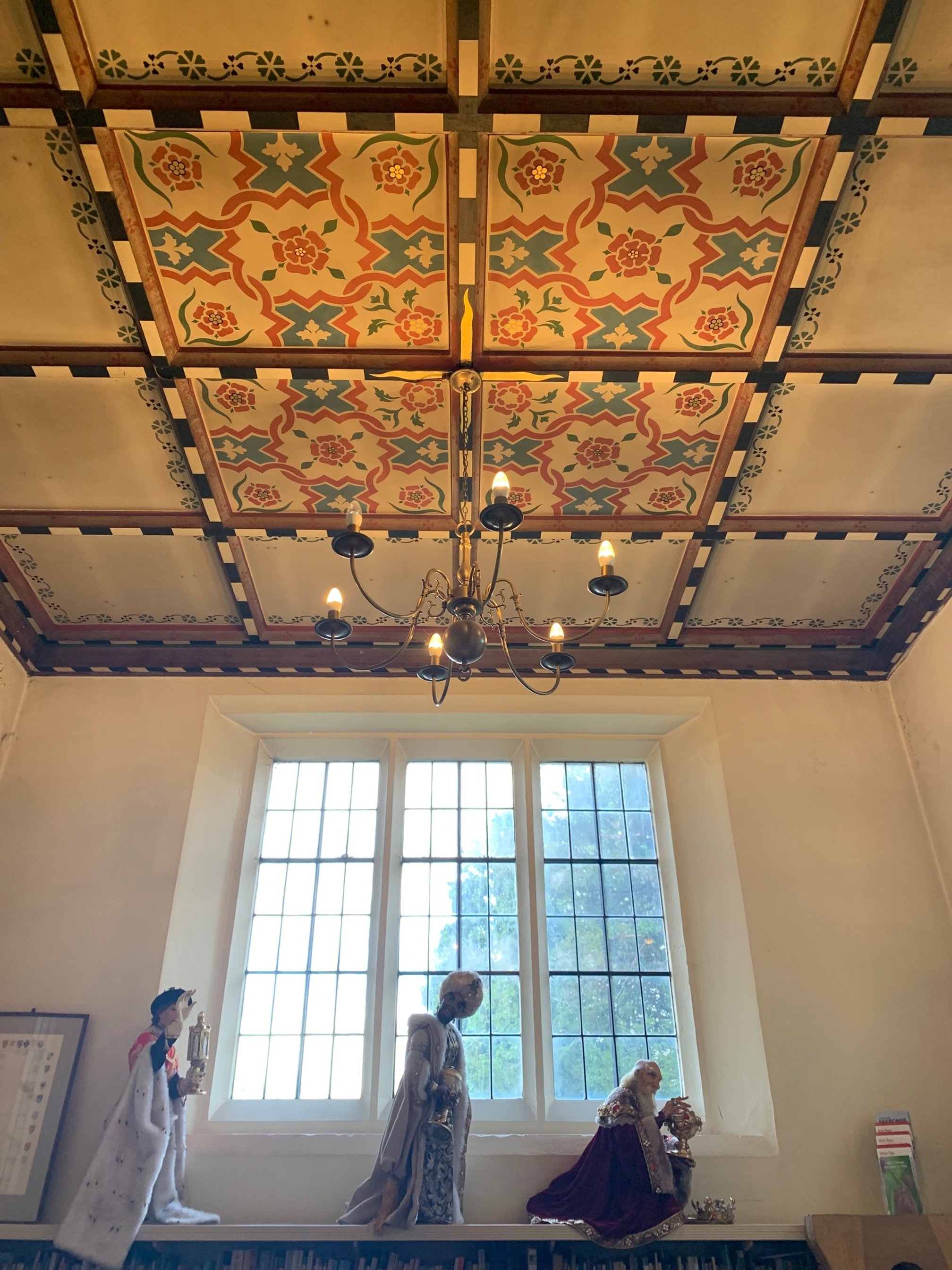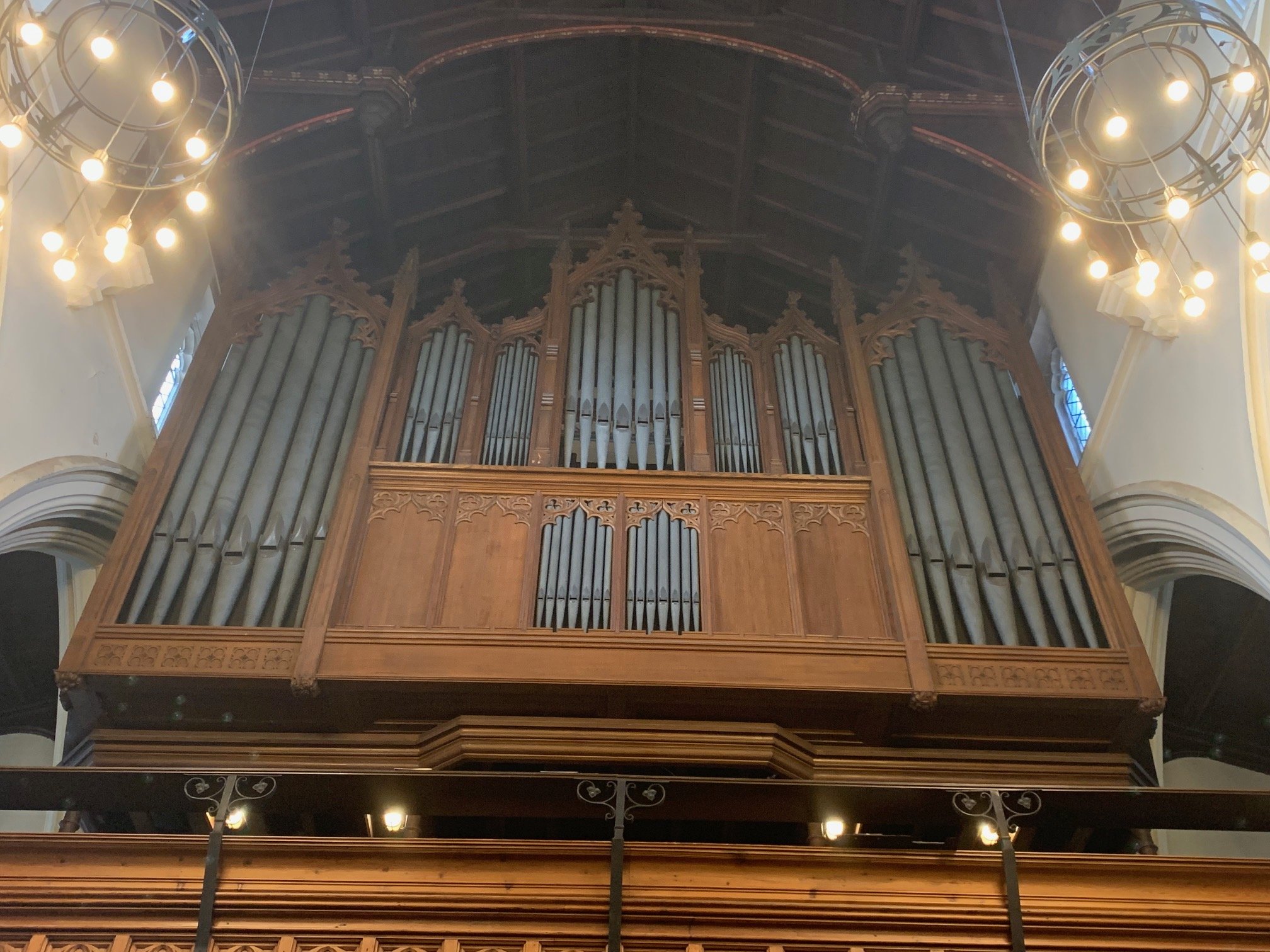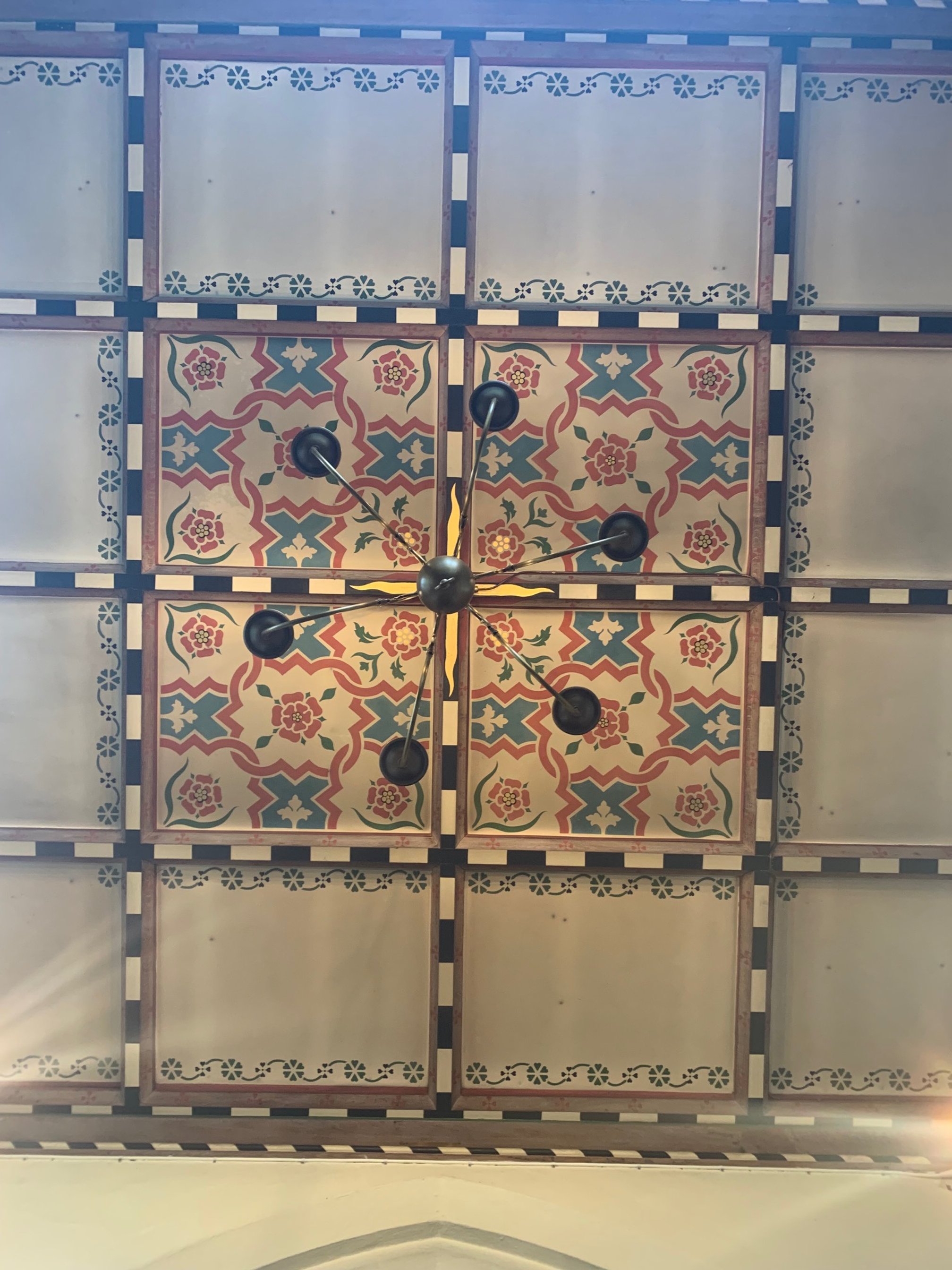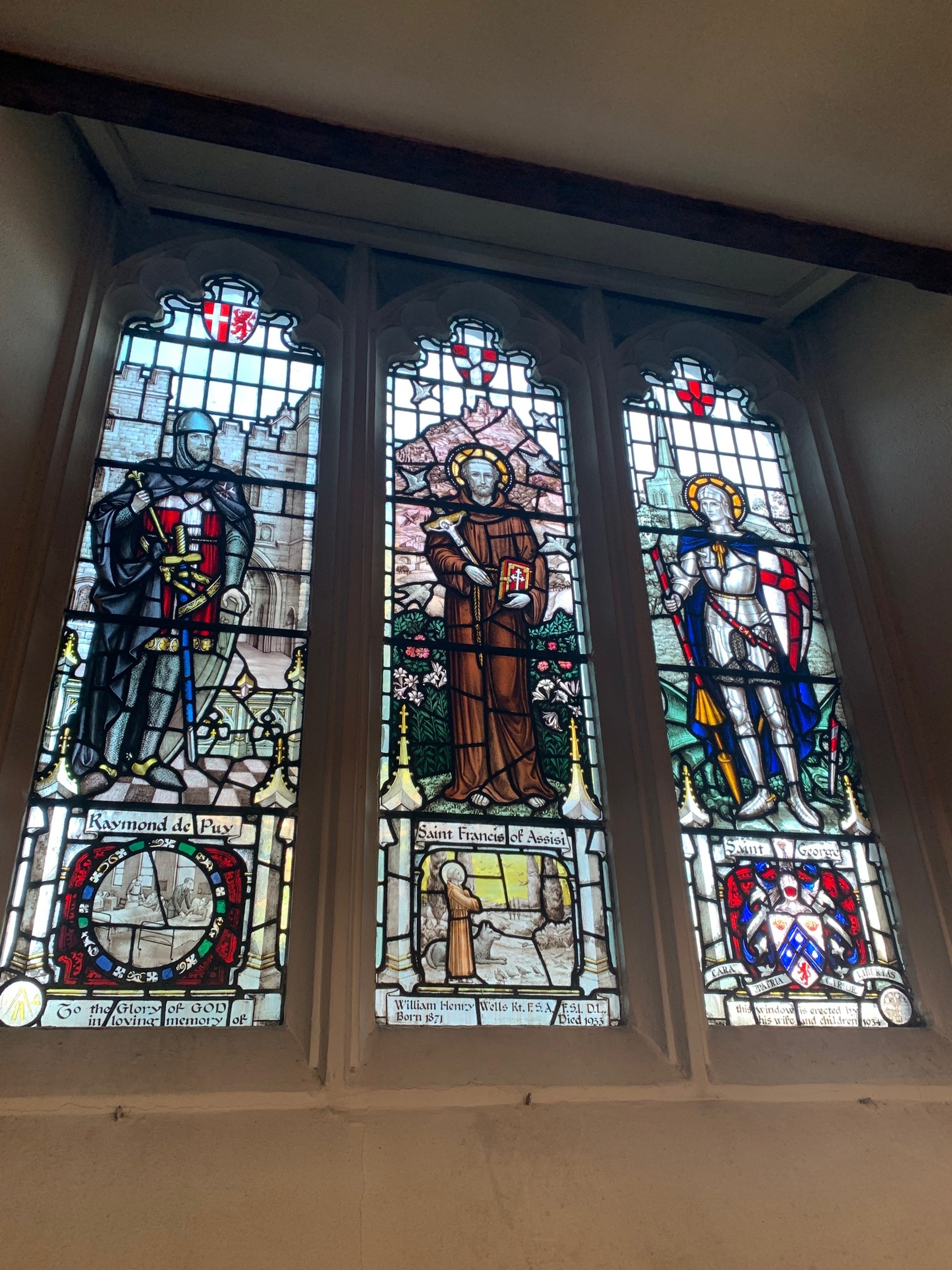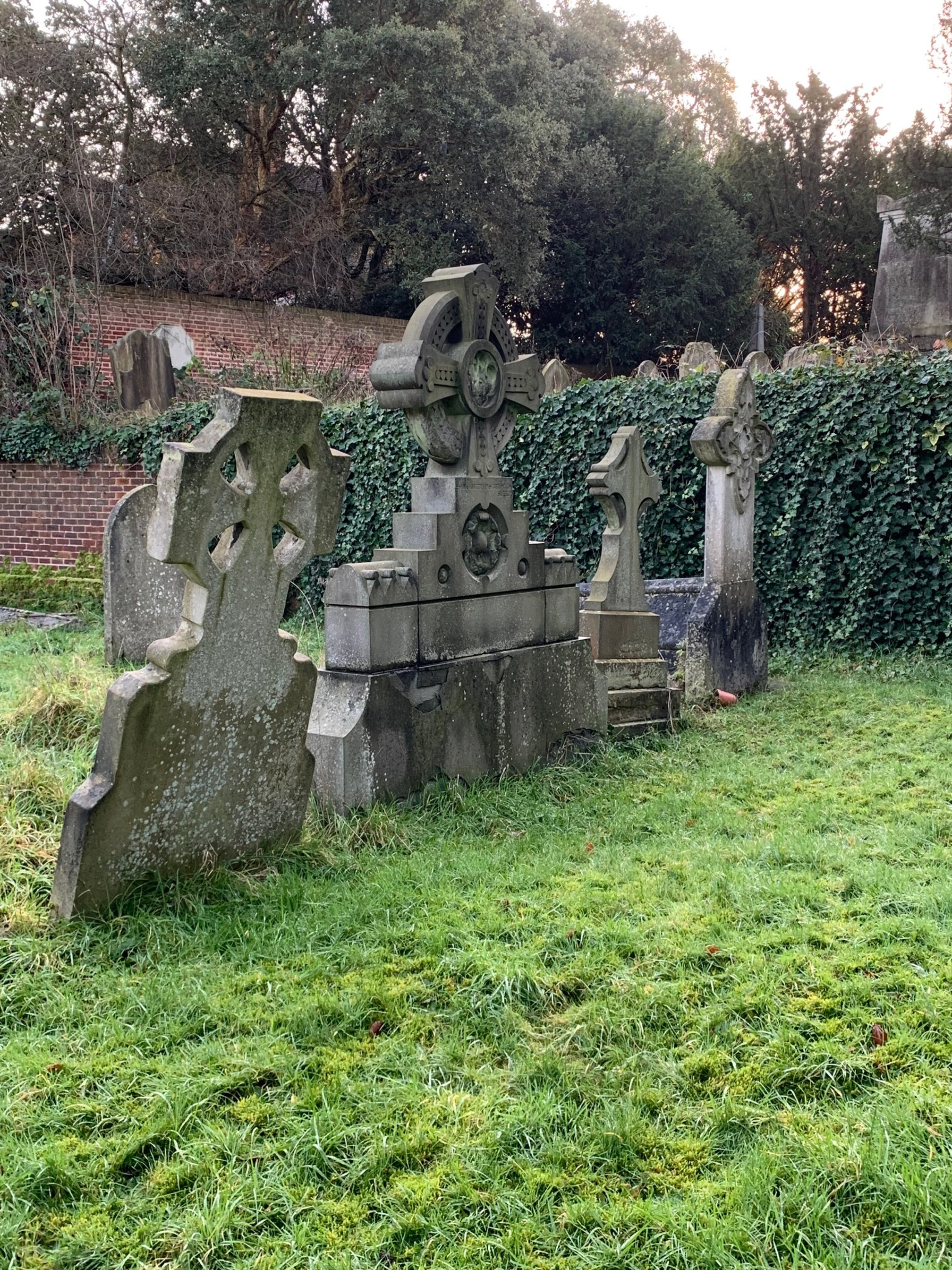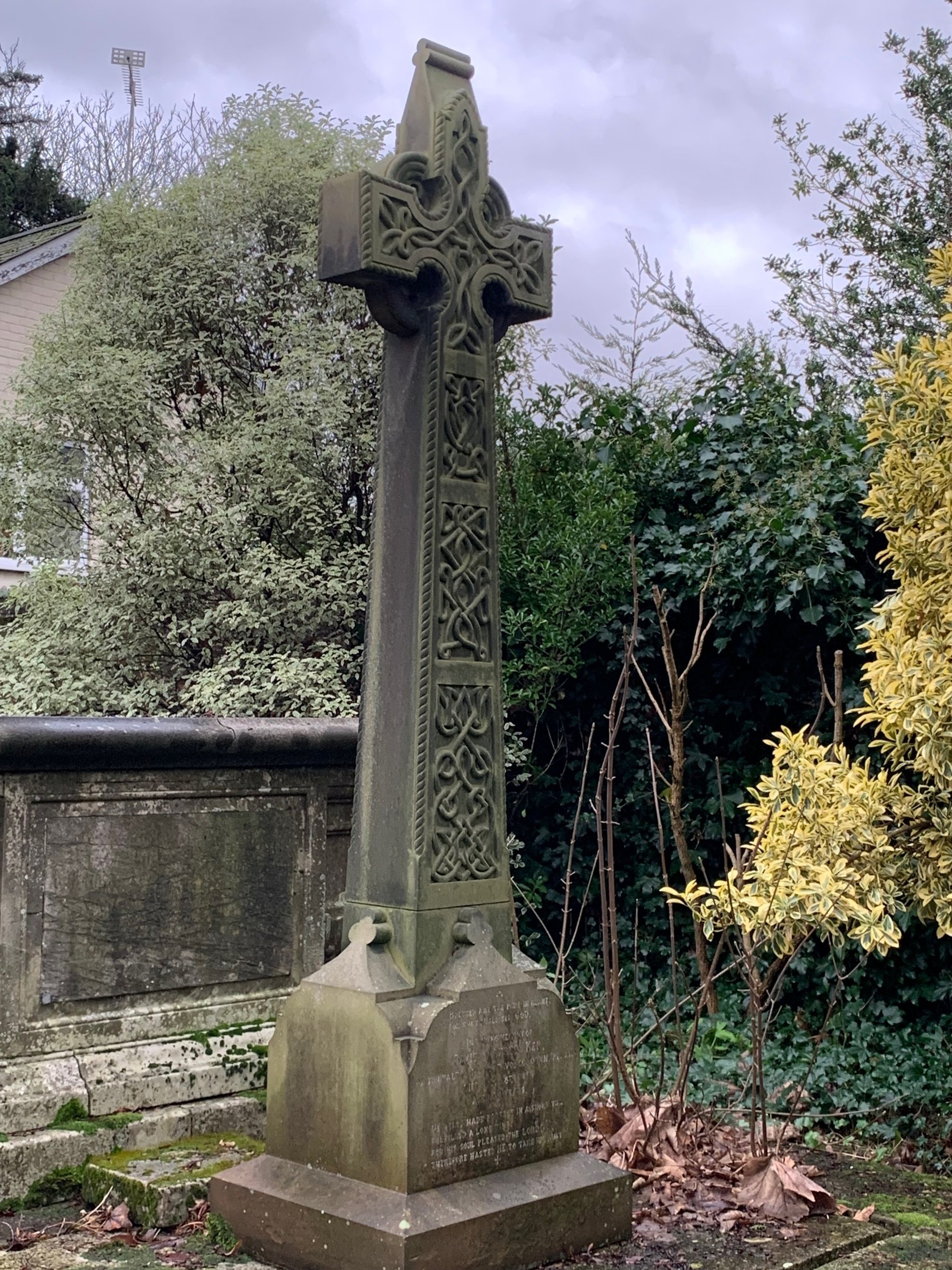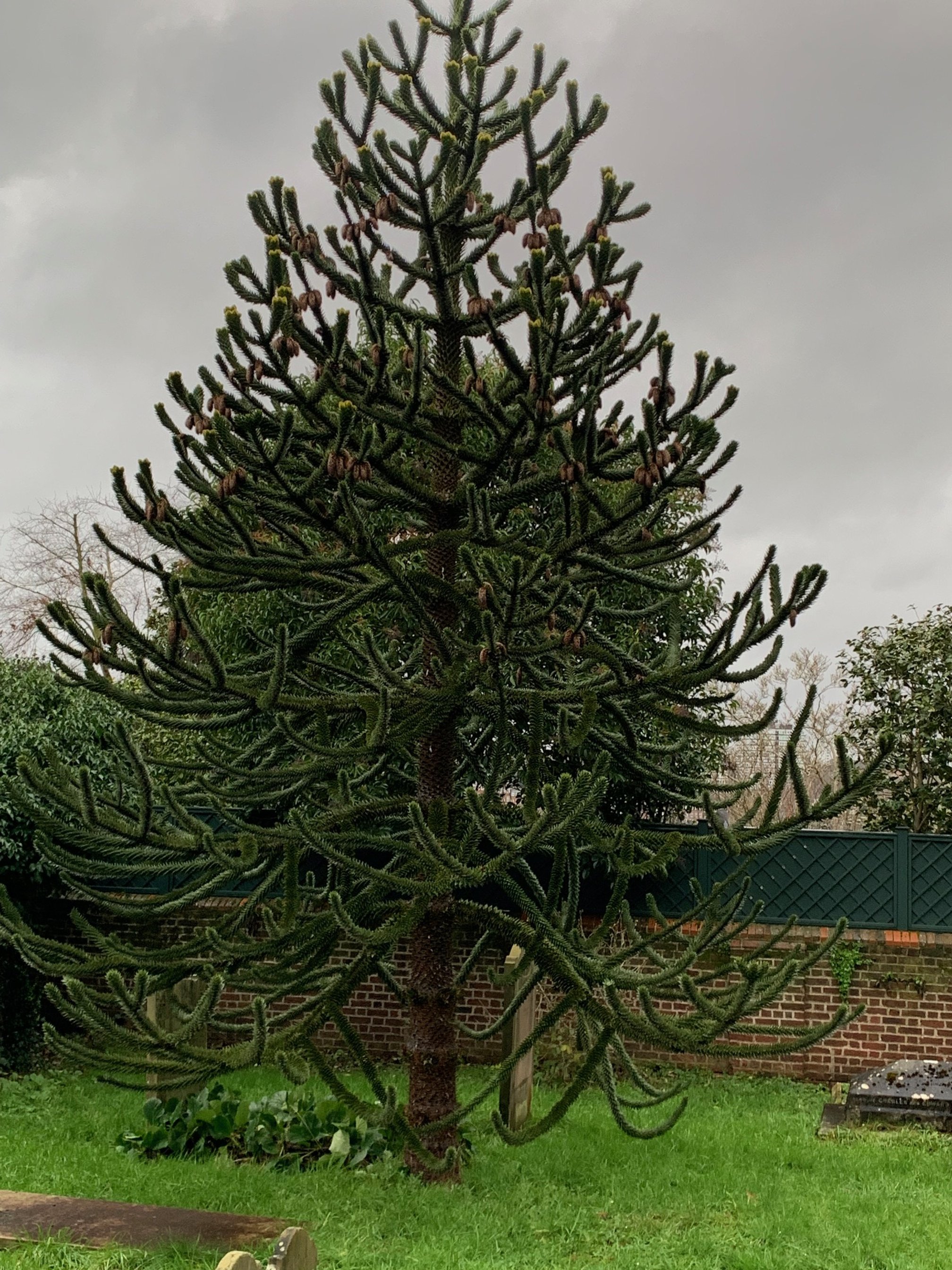The History of St Mary’s Church
-
The first record of a church building on the site of St Mary's can be found in the Domesday book in 1086 where the survey simply says 'there is a church'. There is nothing remaining of this church today but as the population of Wimbledon at the time was less than 100, it is likely to have been a simple wooden building, the size of the present chancel.
The church was rebuilt at the end of the 13th century for a population of about 125. Prints and contemporary drawings of the medieval church indicate that it was about 44 feet long by 36 feet wide. There was a south porch with a typical Surrey wooden belfry surmounted by a spire.
During the time of the Reformation, Wimbledon grew in popularity as a country retreat particularly among court officials. The most notable of these was Sir William Cecil, later Lord Burghley. His family remained strongly connected to the church for the next 100 years, and his son Thomas built the Elizabethan manor house standing to the north of the church on the hill overlooking the present golf-course. It was at this time that the Cecil Chapel was built and indeed those foundations still stand as the map indicates. Despite Wimbledon's increasing popularity the church remained adequate in size as the high death rate meant only a slow increase in population to about 450 by 1700.
-
From 1750 the population of the whole country began to increase more rapidly and space became a premium in the church, so in 1760 a gallery was erected, probably on the north side of the nave and some families erected their own pews. The subsequent rebuilding of the church, however was more due to its irreparable decay after 500 years of use rather than the need for extra room. Urgent repairs were required for the south wall and it was decided to build a north aisle in order to 'make the church more convenient'. The church was thus totally rebuilt west of the chancel at a cost of £2,100.
The exterior of the building was typically Georgian in style built in greystock brick which is distinguishable both in colour and pointing from the later addition. Part of the old walls can still be seen at the west end of each aisle. We can obtain an exact idea of its dimensions by chopping off the present nave at the cross-aisle. Above the aisles were galleries, with a double gallery at the west end
-
Structurally, there was no reason why the Georgian church should not have remained as it was but within 50 years of it being built, the population of Wimbledon had almost doubled to over 2,600. Moreover the railway, which arrived in 1838, offered prospects of even more rapid expansion. It was considered necessary to provide a further 400 seats to accommodate the larger congregation.
The firm of architects chosen to carry out the work was Messrs. Scott and Moffat. Scott (later Sir George Gilbert Scott) was to become a most famous and prolific Victorian architect. As funds were limited, he was given a strict brief not to spend a penny more than £4000. He achieved this by making as much use of the old building as possible. He extended the old nave (which came roughly to the cross aisle) westwards and built a new tower and spire (196 feet tall) The existing Georgian windows were enlarged and given their present perpendicular form and the weakened walls were buttressed at frequent intervals. The slender pillars are not actually stone but iron shafts covered by plaster moulding. Scott provided new galleries and a new hammer-beam oak roof. Finally, in order to harmonise the old and the new, the brickwork was covered with knapped flints to make the whole look of one period.
The rafters in the chancel roof could be mediaeval; they were discovered in 1860 when the chancel was restored and the rafters came to light with the removal of old galleries and a plaster ceiling. They were painted at the time with the current design of chevron with daisy and a stylised leaf and floral design. In 1993, St Mary's celebrated the 150th anniversary of the reconsecration of the nave and chancel and marked the event by undertaking various projects. The chancel roof was in need of repair and this could, and was carried out by the Church Commissioners. However the decoration on the rafters had become very faded over time so through the generous support of several parishioners, the repainting was carried out by a local architect, Peter Bond who volunteered to do the work.
-
The Cecil Chapel was built by Sir Edward Cecil, Viscount Wimbledon in the late 1620's as a mortuary chapel for himself and his family. The chapel was lit by six little windows (commemorating his two wives and four daughters). Two of the little windows had to be moved to make way for the arch to the Warrior Chapel and are now in its south wall. The glass depicts the coat of arms mentioned in the tablet below. The Cecil coat with its six lions rampant on an azure background can be traced on each window. The main window in the south wall contains not only the Cecil arms but the only piece of medieval stained glass in the church, a 15th century figure of St George. This was originally one of the windows on the north side of the chancel together with figures of St John the Baptist and St Christopher. St George is the only one that survived and was transferred to the Cecil Chapel. The left hand light contains the arms of Sir Thomas Cecil. This dates from the 16th century and was originally one of the three coats of arms which made up the east chancel window.
In the centre of the chapel stands the altar tomb of Lord Wimbledon who was a leading general of James I. An outline of his career is given on the north and south sides of the tomb.
Although originally in the Cecil Chapel, the memorial to the second daughter of Sir Edward Cecil with the inscription 'Dorothey Cecill unmaryed as yet' warrants attention and can be found to the west just inside the Warrior Chapel high up on the south wall. The inscription would still have been apt if indeed she had been buried there. She had set up a trust to provide for the upkeep of the chapel and wanted to be buried near her father if she died within half a day's journey from Wimbledon. However she died in France in 1652 and so is buried there still 'unmaryed as yet'.
-
Immediately west of the Cecil Chapel separated by an oaken screen, is the Warrior Chapel designed by Sir Thomas G Jackson who lived at Eagle House. It was built in 1920 and as the Cecil Chapel was used as the choir vestry, it necessitated the building of a new choir vestry to the south and this in turn was enlarged eastwards to provide the clergy vestry in 1950.
The Warrior Chapel is dedicated to the men of Wimbledon who gave their lives in the two World Wars. Inset in the oak panelled walls are the individual bronze tablets bearing the name and rank of each. Each person commemorated is now entered onto the Imperial War Museum's website livesofthefirstworldwar.org. There is a full list of the St Mary's Wimbledon "community" and for each man an image of the plaque, and a link to the Commonwealth War Grave information. In the Chapel itself there are indexes by name, unit, date of death etc. The master database may be consulted on application to plaques@stmaryswimbledon.org.
Prominently in the centre are three VC's, two from the first World War and from the second World War. Lt Cdr Arthur Harrison RN was awarded the Victoria Cross for gallantry in the raid on Zeebrugge in April 1918 and 2nd Lt George Cates Rifle Brigade for action near Bouchavesnes in March 1917. Ian Willoughby Bazalgette, Squadron Leader, was killed in air operations in 1944 aged 25 years. His forbear, Sir Joseph William has his memorial tablet on the north wall of the chancel.
Underneath the tablets of the VC's is a low-side window which was revealed in 1919 during the building of the Warrior Chapel. This was originally an outside wall and it appears to date from the rebuilding of the chancel in the late thirteenth century at a time when the floor of the church was nearly two feet lower than it is today. It is thought that the window with its vertical iron bar may have been used to hear confessions and administer the Sacrament to diseased people forced to remain outside. This led to it often being referred to as a leper window. Such windows have also been called 'lychnoscopes' either because the Pascal lights might be watched through them or because they were used for lights to scare away demons from the graves. Another (more prosaic) theory was simply that it provided ventilation from the burning incense within
-
The major rebuilding of the church over the last two centuries inevitably led to the loss of some of the older memorials but it is perhaps more remarkable that so many have survived. The oldest memorial is an undated tablet low down in the north wall of the chancel to Philip and Margaret Lewston. It was inserted some time after 1537 possibly by Katherine Walter, their grand-daughter. Philip Lewston owned land in Wimbledon including the grounds where King's College now stands. He died in 1462. Katherine and William Walter are commemorated in the Renaissance tablet in the corner of the north wall. Another early gravestone lies under the carpet in the chancel with the inscription in Latin to Sir Richard Wynn MP who died in 1649. He was a friend of Charles I who married the French princess, Henrietta Maria. He became her treasurer and looked after the Manor House on her behalf from 1642 when she fled to Holland. This proved an onerous responsibility and may well have contributed to his death in 1649.
On the south wall of the chancel are two modern brasses, the first of which commemorates William Wilberforce, the philanthropist and slave trade abolitionist. He lived at Lauriston House on the south side of Wimbledon Common and became a regular member of the congregation, sometimes being accompanied by the Younger Pitt who often stayed with Wilberforce. The second brass commemorates Walter Reynolds, Rector of Wimbledon in 1298 who later rose to become Lord Chancellor under Edward II and Archbishop of Canterbury in 1313.
A stone in the nave is inscribed 'to the memory of Peter Shaw, MD Physician in ordinary to their Majesties George II and George III'. There are also stones to Ralph and Anna Wilbraham. who presented a chalice in 1665 and which is still in use today.
Most of the memorials in the church date from the 19th century and refer to influential middle-class people of the district. Some of their names are familiar to us now in the road names around Wimbledon. James Courthope Peache, John Ferrier, General Sir Henry Murray and Lady Murray and Sir William Beaumarice Rush all played an active part in the church. Sir Joseph William Bazalgette is also commemorated. He was the designer and engineer responsible for Putney Bridge and the Victoria, Albert and Chelsea Embankments. He is perhaps more famously known as the engineer who rationalised the decrepit and distinctly smelly London sewers in 1858, diverting the contents away from the River Thames thus probably avoiding a cholera epidemic and definitely improving the air quality of London. Bazalgette's mausoleum is worth a visit being right at the east end of the churchyard. It shows the twin functions of a tomb - to shelter the person's remains and to draw attention to the memory of the dead. There are steps down to the burial chamber which is protected by iron doors.
A list of former Rectors is to be found in a window in the south aisle, the longest serving of recent years being Canon Henry Haygarth who was incumbent for 43 years from 1859 - 1902. He and his wife are buried in the churchyard.
Just inside the west porch is a work of a leading early 19th century sculptor, Sir Richard Westmacott which shows James Perry seated, studying a bust of the famous Whig statesman Charles James Fox. Perry was owner and editor of a radical newspaper, the Morning Chronicle and owned a corn mill on the Wandle. The work was commissioned by his friends 'in testimony of the zeal, courage and ability with which he advocated the principles of civil and religious liberty'.
The most recent memorial located in the window to the north of the pulpit is to Kathleen (Kitty) Godfree who died in 1992 and Leslie Godfree who died in 1971. Separately and together they won at Wimbledon, the ladies singles (twice), the mixed doubles (twice, once together) and gentleman's doubles. Kitty also won Olympic medals and Badminton titles.
A book of remembrance was donated in the 1960's by Edward and Sarah Wates and inscriptions can be entered for those whose ashes are buried in the garden or who have a close connection with the church. These include a number of the Bazalgette family and also an inscription to the memory of Lewis (Lew) Alan Hoad who died in 1994 and who married J. Staley at St Mary's in 1935. He was twice Wimbledon Champion in 1956 and 1957.
-
Since most of the church has been rebuilt or altered over the last 150 years, the furnishings are comparatively modern, being gifts from people in the parish. The pews date from the rebuilding in the 1840's. Richard Milward writes that they are described as 'the most uncomfortable pews in the whole of Christendom'! The source of that quote is not made clear but to this day no dissenting voice has emerged.
The lectern (dated 1867) in memory of Henry Charles Forde was given by his wife and children. The flag above was flown by HMS Inflexible at the Battle of Jutland, May 1916. At the east end of the chancel above the altar a reredos, oak panelling and shields have been erected in memory of Canon Monroe, vicar of the Parish, 1918-30 and his wife.
In 1912, the pulpit and priest's desks were presented in their memory by the children of John and August Boustead of Cannizaro House. The pulpit was originally to the south of the chancel but was moved to the north in 1920. Across the chancel is the Victorian font, the cover of which is in memory of 2nd Lieut. Arthur D.C Dowding who was killed in France, 1940. The Royal Coat of Arms is actually artificial stone and was presented by Mrs Charlotte Marryat in 1842. It relates to the time in the 16th century when Henry VIII owned the church. Charlotte Marryat who was widowed while still young and later became the mother-in-law of the Vicar, Henry Lindsay, wielded considerable influence in church affairs and led an Evangelical movement in support of the poor. She owned Wimbledon House, Parkside and held garden parties in the grounds which raised funds to endow new Almshouses in Camp Road.
The beautiful embroidered kneelers, all 350 of them were the work of parishioners in the late 1980's. Look for a special kneeler made to commemorate the visit of Pope John Paul II to Wimbledon in 1982. An enterprising parishioner gained an interview with the Papal Nuncio, Archbishop Bruno Bernard Heim, expressing her wish to make a commemorative kneeler. He gave her his new design of the Papal coat of arms with the Pope's signature which he had been commissioned to do especially for the Pope. The kneeler can be found in the first pew on the south side.
The shields around the gallery bear the coats of arms of local churches and of the diocese and lords of the manor connected with Wimbledon. The clock was donated in 1877 marking the completion of the building of the tower, by John Murray the publisher who lived at Newstead House, Wimbledon. He is buried in the churchyard just to the west and his clock overlooks his resting place. The cockerel weathervane on top of the spire dates from the rebuilding of the church as it can be seen in a photograph of 1862. Regilded in 1986 it is clearly visible on top of the landmark spire.
Habitats & Heritage Awarded £249k by The National Lottery Heritage Fund for the Sir Joseph Bazalgette & the Great Stink of London Project.
Habitats & Heritage is thrilled to announce that it has been awarded £249k by The National Lottery Heritage Fund for the innovative project, Sir Joseph Bazalgette & the Great Stink of London. The project aims to conserve the mausoleum of the Bazalgette family in St. Mary’s Church, Wimbledon whilst exploring the history of Sir Joseph’s life and works which continue to have a significant impact on our lives today. The Bazalgette Mausoleum, a Grade II listed structure, has graced the grounds of St. Mary’s Church since the late 19th century but the internal vaulting has suffered partial collapse. With the support of The National Lottery Heritage Fund, Habitats & Heritage will restore the Portland stone tomb and provide access. Accompanying the project is a dynamic education and outreach programme that will delve into the life and achievements of Sir Joseph Bazalgette, particularly his monumental work on London’s sewer system that helped eradicate cholera and improve public health.
-
The organ in St Mary's Church is a typical English Romantic church organ, comprising three manuals and pedals, and 39 stops. Its origins go back to 1843, when James Peache donated a smaller organ to the church, which forms the nucleus of the present instrument. In 1925 the organ was rebuilt and enlarged to its present specification by Alfred Hunter of Clapham. It is ideally suited for the Anglican liturgy, both in the leading of rousing congregational hymn-singing and in the accompaniment of a wide variety of choral music.
In 2008, a major refurbishment project of the organ was completed which including moving the console from the west gallery to the north gallery. The specification of the refurbished organ is available in .pdf format
-
The Baptistery at the north end of the cross aisle was built in 1939 in memory of John Beaumont who was the developer of Wimbledon Park. The idea to build it came from one of the church wardens who wanted to move the font from its position in the cross aisle to allow greater room for baptisms. On the occasion of the 150th Anniversary, Canon Gerry Parrott applied for a faculty to resite the font again, to its present position on the south side of the chancel thus doing away with a portable font that was in use at the time He wanted to free up the baptistery as a private prayer chapel. This now houses a considerable library for the benefit of parishioners. The seats were given in memory of Monica and Robert Rohde and the one just outside of Capt F P Lyndon, RD, RNR.
-
Apart from the window glass in the Cecil Chapel, the rest is modern. In the north aisle, the Risen Christ with Angels is dated 1918 and Raymond de Puy, St Francis, St George is dated 1934. The south aisle has Faith, Hope and Charity; St Luke with Angels and the Presentation of Infant Jesus all dating from the 1920s. All were given in memory of individuals. The most recent addition is the east window which replaced the one destroyed in 1944 due to a V-1 exploding on Wimbledon Park golf course. This was provided in 1951 in memory of James Courthope Peache, the upper window being Christ in glory beneath which is the Virgin with the four Evangelists
-
Apparently some of the silver gilt pieces have had an adventurous past but thieves have found that not only are they almost worthless as metal value but are too easily identifiable to be disposed of intact. The oldest is the chalice and cover donated by Anna Wilbraham in memory of her husband who died in 1665. She gave the chalice on condition that she was buried under the same stone as her husband. A silver gilt flagon with oval lid was presented in 1715 and two silver gilt plates in 1727 the gift of Mary Foxley.
The Wimbledon registers record baptisms from 1538, and marriages and burials from 1593. All the old registers which ended in 1881 when special books were prescribed by the government, and some of the later ones, together with the vestry minutes, are now preserved at the Surrey Records Office, Kingston and are freely open to inspection. One of the entries is the marriage of the Duke of Devonshire to the Lady Georgiana Spencer on June 5th 1774. Burial registers are held in the church from 1871 to 1997, baptisms from 1920 and marriages from 1977.
-
One of the loveliest possessions of St Mary's are the bells. In 1984, there was a major refit of all the bells. Of the original eight, two have survived intact and have been put into semi-retirement. The oldest is the original No 7 bell dedicated to St Bartholomew and bearing the shield of William Culverden a London bell founder, circa 1520. The other bell from 1572 has the inscription 'Praise ye the Lord'. These two bells were simply retuned and rehung with the older bell being given a hammer to become the hour bell of the clock and the other a tolling mechanism to become the service bell.
With the casting of the new eight bells in 1984, using metal from the old bells, the remaining six bells may have lost some of their original identity but they have all been given a new one with individual names. Most have been gifted by parishioners. The treble and number 2 are named John and Paul and were originally given in 1927 in memory of Frederick and Alice Green. Numbers 3, 4 and 5 were originally presented by James Edward Bowles Wilson of Cambridge House, Wimbledon and are now known as Peter, Luke and Matthew. Mark, No 6 was given in memory of Charles and Caroline Witts and No 7, Charles, has the lovely inscription 'He alone is great who turns the voice of the wind into a song made sweeter by his own loving. In memory of our dearly beloved husband and father, Charles Edward Solomon'. Mary is the Tenor weighing 11cwt originally made by Richard Phelps in 1715.
The bellringers of St Mary's still peal out the bells every Sunday and for numerous weddings, often joining forces with other bellringers for mid week practising.
-
The early villagers have no memorials. The oldest tablet is dated 1662 and is to be found on the vestry wall in memory of 'that zealous Minr. of J. Christ, Mr J, Simpson'. Around the churchyard are the graves of many leading parishioners who helped create the history of St Mary's Church; Samuel Mason, carpenter, and William Terry and William Jennings, bricklayers who built the Georgian church and William Watney, brewer; the Marryat family tomb is at the end of the path north of the baptistery. There is no inscription but the tomb can be recognised by the family arms and crest which include a vulture and a ram's head. Near the Marryat family grave is a large pyramid of Portland stone in memory of Gerard de Visme d. 1797 who lived at Wimbledon Lodge, Southside. He left money for the annual repair of his tomb and for bread to be given to the poor 'in the winter months'. Opposite the south porch are two large Spencer tombs, one of the Countess of Lucan and the other of the Second Earl's daughter, Lady Georgiana Quinn who, at the age of 28, died in childbirth.
Along with Chiswick and Hampstead, Wimbledon churchyard possesses the highest concentration of listed monuments anywhere in Greater London, one of which is the tomb of John 'Vulture' Hopkins d 1732. Hopkins was a city financier, who added to his considerable fortune through successful property acquisitions. He was known as the Putney usurer, and was satirised by Alexander Pope in one of his essays:
His fortune (after much delay because he set so many conditions) went to Benjamin Bond-Hopkins d. 1774. Benjamin Bond took his benefactor's name in gratitude and his inheritance enabled him to buy Painshill estate in Surrey.
A tithe barn, situated a short distance from the west porch had existed since Georgian times. This was dismantled in 1862 in order to extend the churchyard hence all the later graves can be found adjacent to the field.
As burials are no longer possible in the churchyard except in an established family grave, there is now a Garden of Remembrance where ashes are buried. It is a circular garden and to be found to the north of the church. During 2004, considerable clearance of the churchyard was undertaken as it had become very overgrown. This is being followed up by a replanting scheme particularly around the Garden of Remembrance.
-
In 1956, the then vicar, Revd Leslie Wright was responsible for buying St Mary's field. It cost the church a mere £250 but came with strict covenants to ensure it is kept as an open space. Today's churchgoers are tremendously grateful for this foresight as it makes the church so visible from a distance and not hidden amongst buildings. Since 1969, the field has been a hugely successful fund raiser for the church and other charities during Wimbledon Tennis fortnight as a car park and for many years of the Championships was also the site of a picnic stall. Special charity car boot sales are held during the summer and car parking facilities are available to the users of the church and halls on a regular basis. On a summers day, it is also very pleasant simply to sit on the bench which was placed in the centre in memory of the son of Sir John and Lady Dacie.
The need for a church hall was also recognized at this time. An old hall that St Mary's owned half a mile away was sold and money raised by the congregation, but it was Revd Hugh Marshall who obtained planning permission and set the process in motion just after he arrived in 1974. Fellowship House has lived up to its name having been used as a study centre of Christian art and music, innumerable meetings, children's and adult parties and since 2004, a children's nursery.
In the 1990s it became evident that further expansion was necessary in order to accommodate the increasing number of children in Sunday School. Long discussions ensued as to whether Fellowship House could be extended or whether to build another hall. There were a number of difficulties involved in extending the existing building and eventually with the help of a substantial legacy and tremendous financial support from the congregation, it was decided to build the Garden Hall. It was designed by the architect Terry Pawson and won a Civic Trust Award in 2004. It was officially opened in May 2003 by HRH Princess Alexandra and has since been extremely successful. With a significantly large square shape, it accommodates everything from ballet classes and wedding receptions to church and community functions. The two halls together plus a vibrant congregation make St Mary's Church a thriving, busy centre of activity every day of the week.
-
This section was published as a booklet in 2005 and has been about the history of the building and some of the people who have created it. History is still being created by the life of the church today. It is extremely well attended by people of all ages from within the parish and beyond. Bishop Gilpin School is linked to the church providing guidance to the younger generation and leads to a busy Sunday School and two youth groups. Since 2005, repair works to the roof of the church have been undertaken, as well as a major rebuild of the organ. St Mary's benefits from a committed group of clergy, officeholders and parishioners whose various contributions great and small ensures the growth of St Mary's as a centre of worship and community.
Acknowledgements
The text in this section is an edited version of Jack Harvey's 'History of the Parish Church of St Mary the Virgin, Wimbledon' (1972). Jack Harvey was a parishioner who lived at the Well House. This version was produced by Una Whicheloe in May 2005.
Additional sources:
'A Parish Church since Domesday' (1993) by Richard Milward MA. This book was commissioned by St Mary's on the occasion of the 150th Anniversary in 1993. Richard Milward generously undertook the task and the book is available for sale at the Parish Office for £10.
The map is from an original done by Sir Thomas Jackson RA in 1921 and updated and amended by Denis Aldersea (organist from 1959 to 2002) in 1996.
The recent additions are based on Parish records.
-
The church registers record baptisms from 1538, and marriages and burials from 1593. Completed (apart from very recent) register books are in the Surrey History Centre in Woking.
Ancestry.com includes Surrey registers (burials to 1987, baptisms to 1912, marriages to 1937 and electoral rolls to 1962).
For more information about access, or St Mary's records generally (some in the past were deposited elsewhere), please contact the archivist archivist@stmaryswimbledon.org who has a complete list of the many other items deposited at the History Centre by St Mary's, including vestry minutes, parish magazines, accounts, deeds on charitable foundations, special services etc. Some of these also relate to the other churches in the team and parish.
